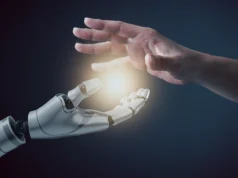GPT-5, OpenAI’s next major AI model, might be released in a few weeks. The Verge said that the model might show up as early as August. Internal testing is almost finished, according to sources acquainted with the company’s plans, and all indications suggest the model will soon be prepared for launch.
The announcement comes after prior rumors that Microsoft engineers were getting server space ready for a potential May release of GPT-5. Even though that timeline changed, OpenAI appears to be nearing the end of its rollout based on the increasing indications of internal use.
Sam Altman, the CEO, has started to openly accept the approach. “We are releasing GPT-5 soon,” he wrote on social media, and he went into greater detail about the matter during a podcast interview with comedian Theo Von. Altman talked about asking GPT-5 a question that he wasn’t entirely sure how to answer during the broadcast. “It provided an excellent response,” he remarked. “Compared to the AI, I felt worthless.” Although he described the incident as “weird,” he acknowledged that it was an obvious illustration of how far technology has advanced.
What distinguishes GPT-5?
According to sources, GPT-5 will offer more than just a power boost. Combining several tools and skills into a single system is anticipated. Depending on the work, such as writing, scripting, web browsing, or creating videos, ChatGPT users frequently move between models.
These requirements might be combined into a single model using GPT-5. This implies that users may be able to perform all tasks using the same interface.
The idea is supported by Altman’s earlier description of GPT-5 as “a system that integrates a lot of our technology.” GPT-5 may be the first update to combine models, in contrast to previous iterations such as GPT-4o or the o3 model.
Additionally, “mini” and “nano” variants of the new model are anticipated to be released. The smaller models, which are intended to provide developers and enterprises with flexible options—trading power for faster performance or lower cost—may be accessible through OpenAI’s API.
Developers are keeping an eye out for
Additionally, there are indications that GPT-5 will have improved code writing skills. Altman shared a story in a post earlier this month that many took to be a reference to better coding abilities. Better performance in creative and programming tasks is typically associated with major model updates, and GPT-5 is probably going to be no different.
The model’s memory, often known as the “context window,” is another place to keep an eye on. The phrase describes the amount of data that a model can process simultaneously. It can remember earlier portions of a conversation or keep on topic better with a larger window. The expansion of this capability has been requested by developers, and GPT-5 is probably going to provide more capacity.
According to experts quoted by TechRadar, GPT-5 has also been connected to OpenAI’s proprietary BioSec Benchmark repository. This shows early confidence in the model’s capabilities and implies that it is already being tested for usage in delicate fields like biosecurity.
The model was also recently mentioned by Alexander Wei, a research scientist at OpenAI, who stated: “We are releasing GPT-5 soon.” Despite being ambiguous, it contributes to the body of remarks indicating that a release is imminent.
a more subdued prelude than previous launches
For the most part, OpenAI has not disclosed any information regarding GPT-5. This launch has been comparatively quiet, in contrast to some previous ones where blog entries and public demonstrations provided hints. The business has refrained from giving away too much, with the exception of a few veiled allusions and social media remarks.
But the suspense is growing. GPT-5 is OpenAI’s response to maintain its position as one of the most popular AI platforms in the face of fierce competition from rivals like Google’s Gemini and Anthropic’s Claude in the generative AI space.
A potential Sora upgrade might be included in the release.
OpenAI might be working on an update for their video production tool, Sora, in addition to GPT-5. Many people think a new version of Sora is being developed because tech analyst Tibor Blaho recently posted a screenshot on social media that seemed to display internal filenames labelled “Sora 2.”
When Sora was first launched in December 2024, it was seen as a significant advancement in AI-generated video. However, since then, other models have begun to receive greater attention, such as Google’s Veo 3, Kling 2, and Runway. GPT-5 and a Sora upgrade would help OpenAI remain relevant in the rapidly evolving AI video market.
Even while OpenAI hasn’t confirmed Sora 2, it would make sense to add new features or improve speed, particularly since the business is attempting to demonstrate how its tools can complement one another under a single model family.
Developers, academics, and investors will be keeping a close eye on things in the coming weeks. GPT-5 may be a significant step toward more cohesive, adaptable AI systems designed for a greater variety of real-world applications if it fulfills its early promises.







